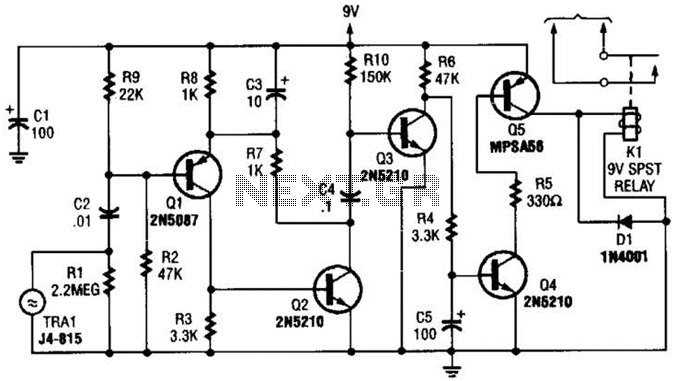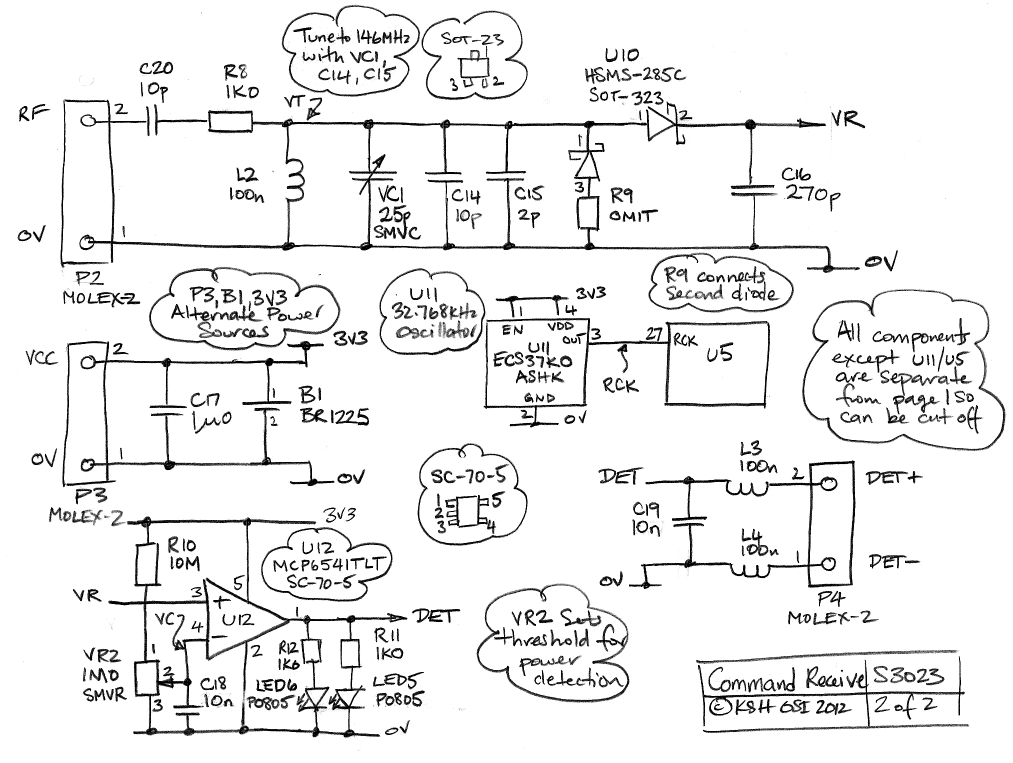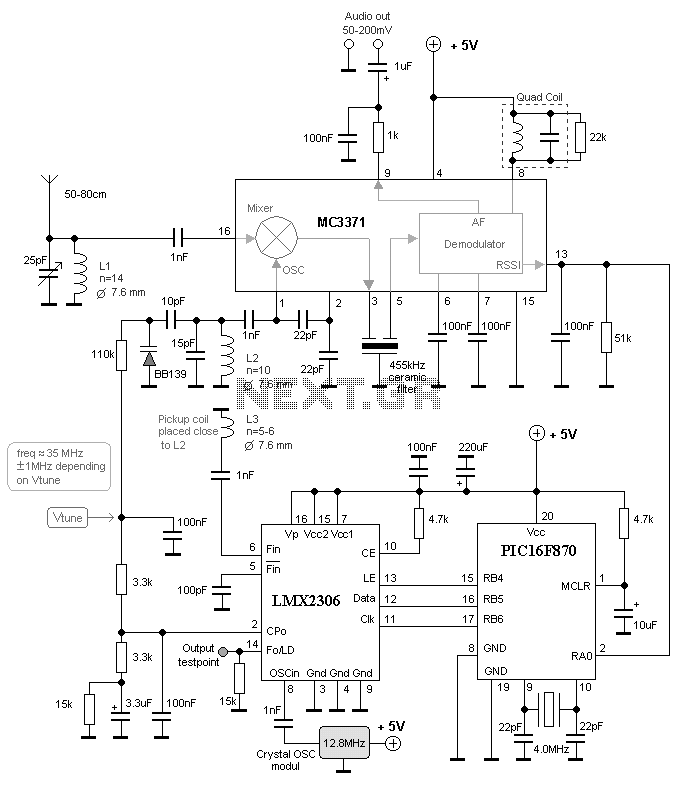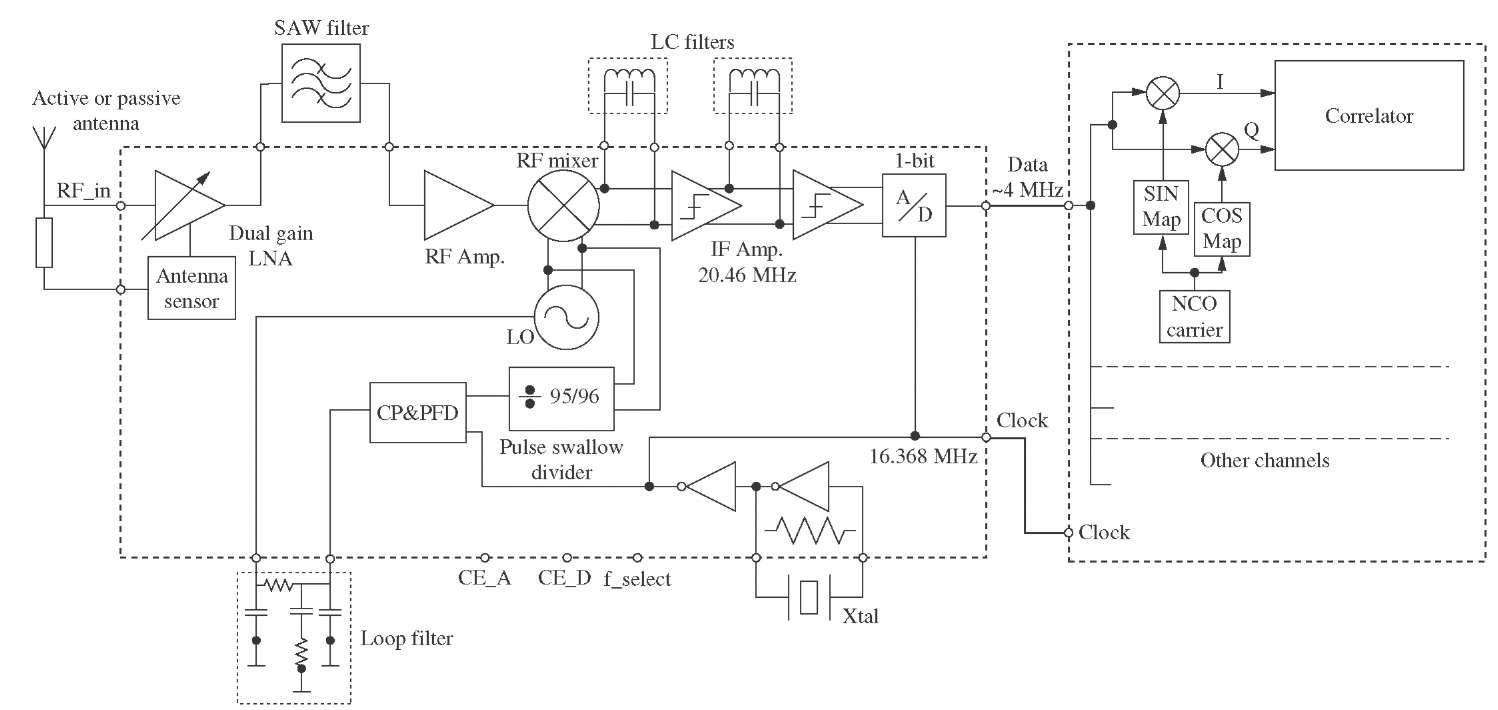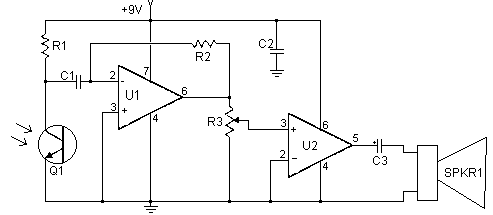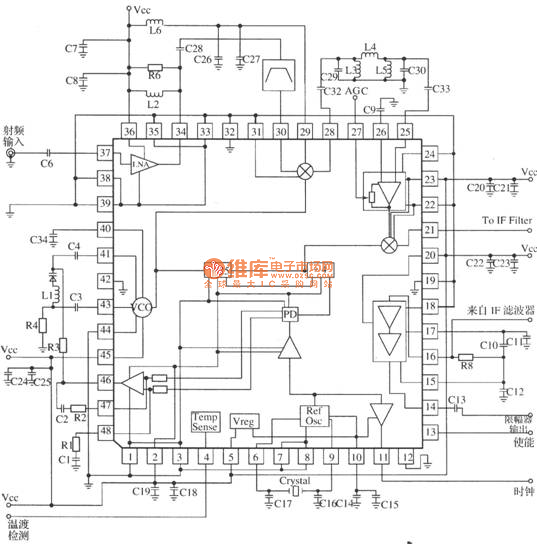
The AA8V Twinplex Regenerative Receiver
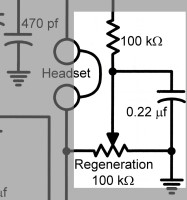
The antenna coupling capacitor is an essential component in a regenerative receiver that does not include an RF stage, such as the Twinplex. In this type of receiver, the antenna is a vital part of the regenerative detector, and for optimal performance, the coupling to the antenna must be easily adjustable. Increasing the capacitance enhances the coupling, while decreasing it reduces the coupling. After the signal passes through the coupling capacitor, it is directed to a parallel resonant circuit composed of L1 and the bandset and bandspread capacitors. This resonant circuit effectively shorts to ground all signals except for the one to which the circuit is tuned (the resonant frequency). The resonant frequency is determined by the inductance of L1, which can be altered by switching coils, along with the settings of the bandset and bandspread capacitors. The bandset capacitor is used to select the portion of the band to be tuned, while the bandspread capacitor is utilized for fine-tuning. Since the antenna is part of the detector circuit, any changes to the antenna or its coupling will also affect the frequency to which the receiver is tuned, which represents a limitation of this circuit type. For further details, additional resources on operating a regenerative receiver are available. The output from the resonant circuit is coupled to the grid of the first triode through a 100 pF capacitor. The triode's grid and cathode operate as a diode, rectifying the signal similarly to a crystal diode in a crystal radio. This rectification induces a negative charge on the grid, which could accumulate and eventually cut off the tube's operation. To mitigate this, a 2.2 Megohm resistor discharges some of the charge, maintaining a small negative voltage (grid bias) on the grid. This grid bias prevents the tube from loading the tuned circuit, thereby preserving selectivity. The tickler coil L2 is the defining feature of a regenerative detector. The amplified signal from the plate of the tube passes through the tickler coil, which is wound in close proximity to the tuning coil L1. Together, these coils form a transformer, with a portion of the amplified signal fed back in phase to the input circuit. This positive feedback, known as regeneration, amplifies the signal significantly more than would typically occur, allowing substantial amplification within a single stage. Proper polarity connection of the tickler coil is crucial; incorrect wiring can lead to reduced gain instead of increased gain. A common error in constructing a regenerative receiver is connecting the tickler coil in reverse. If regeneration is not functioning correctly, reversing the tickler coil connections may resolve the issue. Both excessive and insufficient regeneration can be problematic, necessitating adjustable regeneration. In the Twinplex, regeneration is controlled by varying the plate voltage of the detector via a potentiometer connected between B+ and ground. Adjusting the wiper position modifies the detector's plate voltage. To minimize noise generated by the wiper, a 0.22 µF capacitor is connected between the wiper and ground, effectively shorting the noise to ground. The signal in the plate circuit comprises the amplified RF signal along with the detected audio. The plate decoupling circuit allows audio signals to pass while blocking RF signals. The reactance of the 470 pF capacitor is low at RF frequencies, grounding one end of the tickler coil for RF and completing the RF plate circuit. Without this capacitor, regeneration would not occur. Conversely, the capacitor's reactance is significantly higher at audio frequencies, preventing audio signals from flowing to ground.
The regenerative receiver circuit, particularly in the context of the Twinplex design, demonstrates a unique interplay between components that facilitate signal amplification and tuning. The antenna coupling capacitor serves as the initial interface, allowing for adjustable coupling that is crucial for the receiver's sensitivity. The parallel resonant circuit formed by L1 and the associated capacitors plays a pivotal role in isolating the desired frequency while filtering out unwanted signals. The integration of the tickler coil into the circuit introduces a feedback mechanism that is central to the regenerative process, enabling significant amplification. The careful design of the grid biasing and decoupling circuits ensures that the receiver maintains stability and selectivity, preventing overload while allowing for effective audio signal processing. This intricate balance of components and their interactions is what enables the regenerative receiver to function effectively, making it a notable choice in specific radio applications.The antenna coupling capacitor is a critical component in a regenerative receiver without an RF stage, like the Twinplex. In such a receiver, the antenna is an integral part of the regenerative detector, and for proper operation the coupling to the antenna must be easily adjustable.
Increasing the capacitance increases the coupling and vise versa. After passing through the coupling capacitor, the signal is applied to a parallel resonant circuit consisting of L1 and the bandset and bandspread capacitors. The resonant circuit shorts to ground all signals except that to which the circuit is tuned (resonant frequency.
) The resonant frequency is determined by the inductance of L1, which can be changed by switching coils, and the settings of the bandset and bandspread capacitors. The bandset capacitor is used to set the portion of the band you wish to tune, and the bandspread is then used for the fine tuning.
Because the antenna is part of the detector circuit, changing the antenna or the antenna coupling also affects the frequency to which the receiver is tuned. This is one of the shortcomings of this type of circuit. For more information on this, see my page on How to Operate a Regenerative Receiver. The output of the resonant circuit is coupled to the grid of the first triode through a 100 pf capacitor.
The grid and cathode of the triode function as a diode and rectify the signal, much as the crystal diode does in a crystal radio. The rectifying action puts a negative charge on the grid, and this charge would build up and eventually make the grid so negative that the tube would be cut off.
To prevent this, the 2. 2 Megohm resistor bleeds some of the charge off, leaving a small negative voltage (grid bias) on the grid. The grid bias helps to prevent the tube from loading the tuned circuit, which would lower the selectivity.
The tickler coil L2 is the part that distinguishes a regenerative detector from all others. The amplified signal in the plate of the tube passes through the tickler coil, which is wound in close proximity to the tuning coil L1. The two coils form a transformer, and some of the amplified signal in the plate circuit is fed back in phase to the input circuit.
This positive feedback, or regeneration, gives the detector its name and takes place over and over again, amplifying the signal many times over that which would normally occur. This allows a huge amount of amplification to take place in a single stage. The tickler coil must be connected with the proper polarity, otherwise the feedback reduces, rather than increases, the gain.
A common mistake in constructing a regenerative receiver is to connect the tickler coil backwards. If your receiver does not want to regenerate properly, try reversing the connections to the tickler coil. Too much regeneration is as bad as too little, so the regeneration must be adjustable. There are several ways to do this, but in the Twinplex the plate voltage of the detector is varied to control the regeneration.
The regeneration control is a potentiometer connected between B+ and ground. Changing the position of the wiper changes the plate voltage of the detector. Since the wiper can generate some noise, and since the detector can greatly amplify the noise, a 0. 22 uf capacitor is connected between the wiper and ground to short circuit the noise to ground. The signal in the plate circuit consists of the amplified RF signal along with the detected audio. The plate decoupling circuit allows the audio to pass through, while blocking the RF. The reactance of the 470 pf capacitor is very low at RF, effectively grounding one end of the tickler coil for RF and completing the plate circuit for RF. Without this capacitor, the receiver will not regenerate. At the same time, the reactance of the capacitor is much higher at audio frequencies, keeping them from flowing to ground.
On the other hand, the reactance of the 2. 5 mH RF c 🔗 External reference
The regenerative receiver circuit, particularly in the context of the Twinplex design, demonstrates a unique interplay between components that facilitate signal amplification and tuning. The antenna coupling capacitor serves as the initial interface, allowing for adjustable coupling that is crucial for the receiver's sensitivity. The parallel resonant circuit formed by L1 and the associated capacitors plays a pivotal role in isolating the desired frequency while filtering out unwanted signals. The integration of the tickler coil into the circuit introduces a feedback mechanism that is central to the regenerative process, enabling significant amplification. The careful design of the grid biasing and decoupling circuits ensures that the receiver maintains stability and selectivity, preventing overload while allowing for effective audio signal processing. This intricate balance of components and their interactions is what enables the regenerative receiver to function effectively, making it a notable choice in specific radio applications.The antenna coupling capacitor is a critical component in a regenerative receiver without an RF stage, like the Twinplex. In such a receiver, the antenna is an integral part of the regenerative detector, and for proper operation the coupling to the antenna must be easily adjustable.
Increasing the capacitance increases the coupling and vise versa. After passing through the coupling capacitor, the signal is applied to a parallel resonant circuit consisting of L1 and the bandset and bandspread capacitors. The resonant circuit shorts to ground all signals except that to which the circuit is tuned (resonant frequency.
) The resonant frequency is determined by the inductance of L1, which can be changed by switching coils, and the settings of the bandset and bandspread capacitors. The bandset capacitor is used to set the portion of the band you wish to tune, and the bandspread is then used for the fine tuning.
Because the antenna is part of the detector circuit, changing the antenna or the antenna coupling also affects the frequency to which the receiver is tuned. This is one of the shortcomings of this type of circuit. For more information on this, see my page on How to Operate a Regenerative Receiver. The output of the resonant circuit is coupled to the grid of the first triode through a 100 pf capacitor.
The grid and cathode of the triode function as a diode and rectify the signal, much as the crystal diode does in a crystal radio. The rectifying action puts a negative charge on the grid, and this charge would build up and eventually make the grid so negative that the tube would be cut off.
To prevent this, the 2. 2 Megohm resistor bleeds some of the charge off, leaving a small negative voltage (grid bias) on the grid. The grid bias helps to prevent the tube from loading the tuned circuit, which would lower the selectivity.
The tickler coil L2 is the part that distinguishes a regenerative detector from all others. The amplified signal in the plate of the tube passes through the tickler coil, which is wound in close proximity to the tuning coil L1. The two coils form a transformer, and some of the amplified signal in the plate circuit is fed back in phase to the input circuit.
This positive feedback, or regeneration, gives the detector its name and takes place over and over again, amplifying the signal many times over that which would normally occur. This allows a huge amount of amplification to take place in a single stage. The tickler coil must be connected with the proper polarity, otherwise the feedback reduces, rather than increases, the gain.
A common mistake in constructing a regenerative receiver is to connect the tickler coil backwards. If your receiver does not want to regenerate properly, try reversing the connections to the tickler coil. Too much regeneration is as bad as too little, so the regeneration must be adjustable. There are several ways to do this, but in the Twinplex the plate voltage of the detector is varied to control the regeneration.
The regeneration control is a potentiometer connected between B+ and ground. Changing the position of the wiper changes the plate voltage of the detector. Since the wiper can generate some noise, and since the detector can greatly amplify the noise, a 0. 22 uf capacitor is connected between the wiper and ground to short circuit the noise to ground. The signal in the plate circuit consists of the amplified RF signal along with the detected audio. The plate decoupling circuit allows the audio to pass through, while blocking the RF. The reactance of the 470 pf capacitor is very low at RF, effectively grounding one end of the tickler coil for RF and completing the plate circuit for RF. Without this capacitor, the receiver will not regenerate. At the same time, the reactance of the capacitor is much higher at audio frequencies, keeping them from flowing to ground.
On the other hand, the reactance of the 2. 5 mH RF c 🔗 External reference
